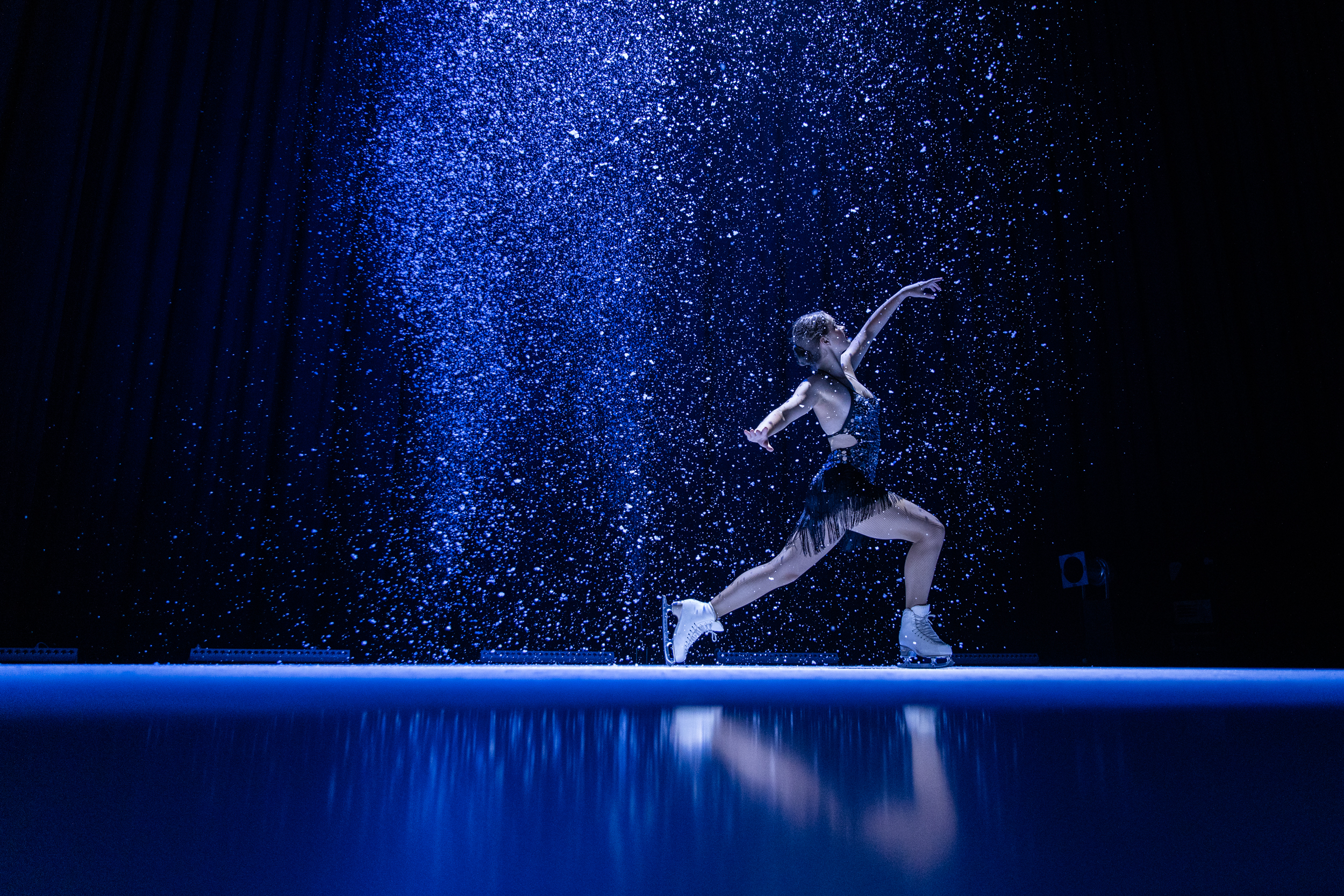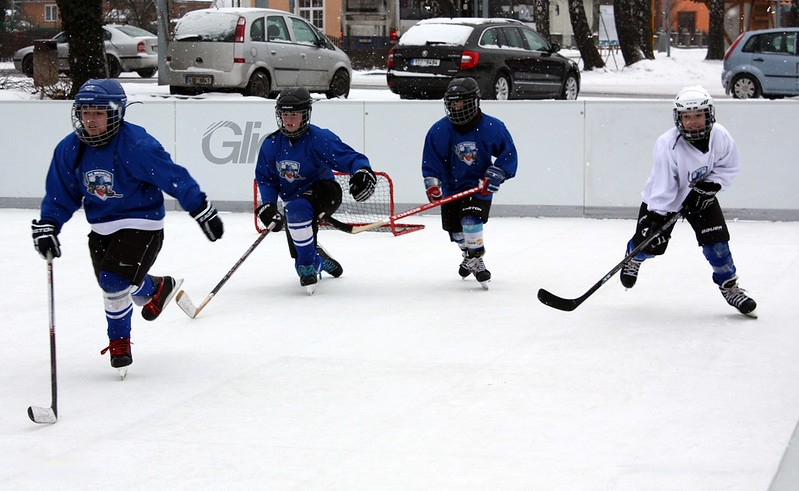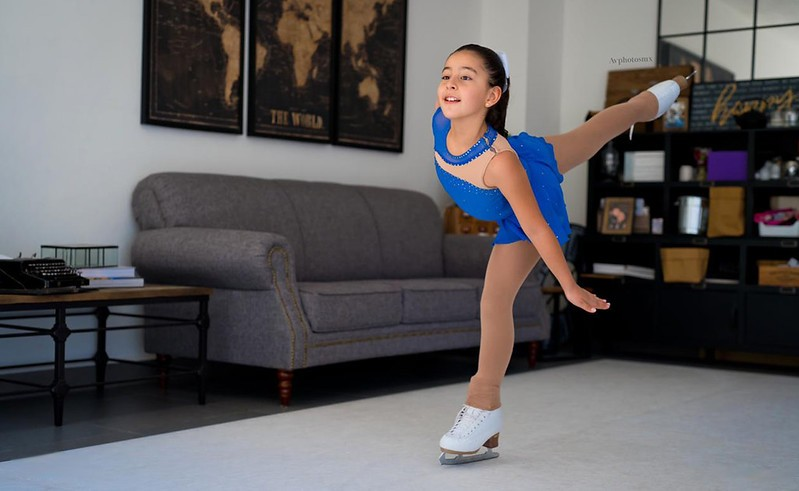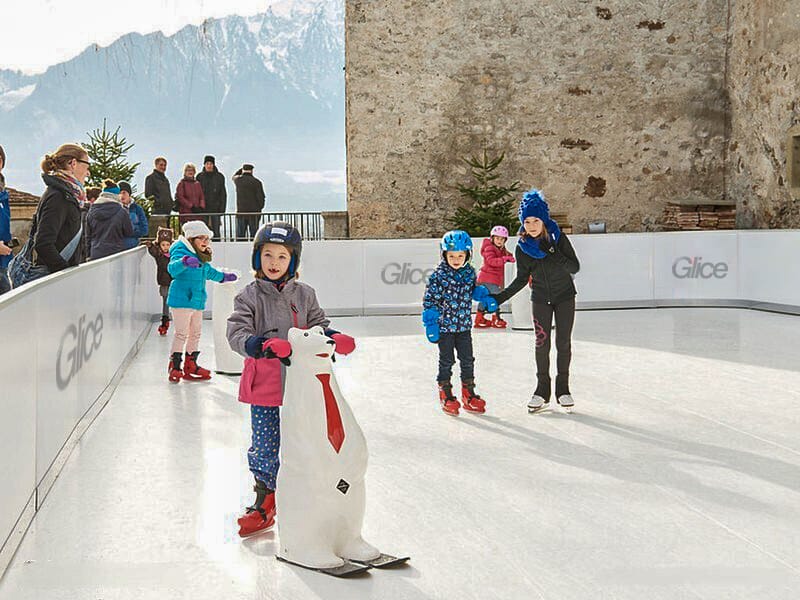Ice rinks hold a particular fascination; they are closely related to winter magic and Christmas tales. Many want to form part of the ice skating fun and seek it in their area. Besides the natural frozen lakes, indoor ice skating rinks have become a popular option. Nowadays, an ice hockey rink attracts hundreds of spectators and sports enthusiasts. But how are they made? And is there more than just the ice rink surface? That’s what we will explore in this blog post.
Ice Rinks
Ice surfaces serve various purposes and have captivated people’s imaginations for centuries. They represent stages for the art of figure skating, the excitement of ice hockey, and much more.
Definition and Purpose
An ice rink, at its core, is a specially designed surface made of frozen water that allows individuals to skate, play, or perform activities on it. These rinks vary, from small backyard installations to massive, professional facilities. They are commonly used for recreation, sports, performing arts, and community events.
Conventional vs. Synthetic Ice
Conventional Ice Rinks
Traditional ice rinks, often called “indoor ice rinks,” are the most common type. They provide a controlled environment for ice-based activities during the coldest months of the year, making them essential to many communities. This section looks into the construction process of conventional arena ice rinks and the maintenance challenges they encounter.
How do they make the ice at an ice skating rink?
1. Subfloor Preparation
The construction of indoor skating rinks begins with the subfloor preparation. This step is crucial as it sets the foundation for the entire ice surface. The subfloor typically consists of a concrete base, carefully leveled and insulated to prevent heat from escaping into the ground. To achieve energy efficiency, insulation materials like foam boards or specialized subfloor systems are often used.
2. Piping and Cooling Systems:
One of the critical elements in an ice rink’s construction is the piping system. A network of pipes is embedded in the subfloor, which circulates a coolant, often a mixture of water and antifreeze. This coolant system is responsible for regulating the temperature of the ice. Specialized chillers and refrigeration units maintain the ice surface at the desired temperature, usually around -6 to -4 degrees Celsius (20 to 25 degrees Fahrenheit).
3. Ice Layering:
To create the ice surface, thin layers of water are applied repeatedly. This process is typically done using a Zamboni-like ice resurfacer, which ensures an even distribution of water. Layer by layer, the ice surface is built until it reaches the desired thickness, usually about 2.5 cm (one inch). In this process, it is important to maintain an even surface throughout. Adding marketing or promotional elements beneath the ice layer of an ice rink is a creative way to incorporate branding and advertising without interfering with the ice surface or the safety of the skaters.
Maintenance and Challenges
Maintaining a conventional ice rink involves constant care and attention to ensure a safe and high-quality skating experience. Keeping the ideal environmental conditions for the ice is one of the main challenges when running an ice rink.
1. Temperature and Humidity Control
It is essential to maintain the surface at the correct temperature at all times. Variations in temperature can lead to uneven ice, which creates hazards for skaters. Humidity control is also neccesary because high humidity can affect the ice quality negatively.
2. Ice Resurfacing
Frequent resurfacing is essential to keep the ice in prime condition. Ice resurfacing machines, commonly known as Zambonis, scrape the surface, remove imperfections, and add a thin layer of hot water to create a smooth finish. This process may need to be repeated multiple times during busy hours. For example, an NHL ice rink is resurfaced every 20-minute period.
3. Repairs and Maintenance
Ice rinks experience wear and tear, especially in high-traffic areas. Unaddressed cracks or imperfections on the surface can turn into safety hazards. These issues need to be resolved as quickly as possible to ensure the longevity of the ice.
4. Sustainability Challenges
In recent years, there has been a growing emphasis on sustainability in ice rink management. Maintaining energy-efficient systems, reducing water consumption, and implementing eco-friendly refrigerants are some challenges rink operators face to minimize their environmental impact. Ice rinks form an essential part of many communities. Sustainability issues must be fixed to ensure the sport survives in the long run.
Synthetic Ice Rinks
Synthetic ice rinks are a modern alternative to conventional ones, offering a unique and versatile solution for ice-based activities. This section provides an overview of synthetic ice rinks, their benefits, the manufacturing process, and maintenance.
Synthetic ice rinks, also known as artificial ice rinks, are made to replicate the experience of ice skating on a surface that is not made of real ice. These rinks consist of specially engineered panels that simulate the gliding sensation of refrigerated ice.

Benefits:
- Versatility: Synthetic ice rinks can be installed indoors and outdoors, making them adaptable to various settings, including malls, parks, and even residential spaces.
- Year-Round Use: Unlike conventional ice rinks that are weather-dependent, synthetic rinks can be used year-round, providing consistent access to ice-based activities.
- Lower Operating Costs: Synthetic ice rinks eliminate the need for refrigeration systems and the continuous cooling of the ice, resulting in reduced energy consumption and operational expenses.
- Eco-Friendly: These rinks are often considered more environmentally friendly since they do not require refrigerants or large amounts of water for ice resurfacing.
- Low Maintenance: While they require periodic cleaning and lubrication, synthetic ice rinks generally have lower maintenance needs than conventional ones.
- Ease of Installation: Synthetic ice rinks are easier and faster to install than conventional rinks, making them a convenient option for temporary installations.
Manufacturing Process
1. Specialized Panels
The manufacturing of synthetic ice rinks involves creating specialized panels with a high-density polymer. These sheets are designed to be self-lubricating, allowing for minimal friction between the surface and blades of the ice skates.
2. Interlocking System
The panels are designed to interlock securely, creating a stable and seamless surface. This interlocking system between one ice sheet and another ensures the rink remains flat and even during use.
Synthetic ice rinks offer an exciting and versatile alternative to conventional ice rinks. They have proven to be an attractive choice for various applications, from recreational skating to professional training, providing opportunities for ice-based activities in diverse settings.
Choosing the Right Ice Rink
Selecting the right ice rink is a crucial decision, whether you’re a business owner, community organizer, or an individual seeking a venue for ice-based activities. This section provides insight into the key factors to consider when making this choice.

Key Factors
1. Purpose and Intended Use
Consider the primary purpose of the ice rink. Are you looking to provide recreational skating for the community? Will it serve as an ice hockey rink or to offer figure skating classes? The intended use will influence the size, features, and maintenance requirements of the rink.
2. Location and Space
The available space, whether indoors or outdoors, will dictate the type of ice rink that can be installed. Consider the geographical location and climate, affecting whether a conventional or synthetic rink is more suitable.
3. Budget
Determine your budget for the construction, maintenance, and operational costs of the ice rink. Conventional ice rinks often have higher upfront costs due to refrigeration systems and higher maintenance costs. Synthetic rinks may require an initial investment for quality panels.
4. Environmental Considerations
Sustainability and environmental impact are increasingly important. Look at the environmental aspects of your choice, considering factors like energy consumption, water usage, and the materials used in construction.
5. Maintenance and Operations
Think about the ongoing maintenance requirements. Both conventional and synthetic rinks require regular care, but the extent and nature of maintenance can vary significantly.
6. Local Regulations and Permits
Be aware of local regulations and permit requirements for ice rinks in your area. Compliance with safety standards and zoning regulations is essential.
7. Community Engagement
Engage with your community to gauge interest and gather input. Consider how the ice rink will serve the community’s needs and foster local engagement.

Choosing the right ice rink is a decision that depends on various factors and considerations. Whether you are a community organizer, a business owner, or an individual looking to embrace the ice, it’s essential to weigh these factors carefully before making a choice.
As you move forward, you can use these factors as guiding principles to make an informed decision that aligns with your goals, resources, and the needs of your community or target audience. The choice between a conventional or synthetic ice rink should be well-suited to the purpose you have in mind, the space you have available, and your budget.
The Future of Ice Rinks
The world of ice rinks is evolving, reflecting changes in technology, sustainability, and the evolving needs of communities.

Here’s a glimpse into the future of ice rinks:
1. Sustainability and Eco-Friendly Solutions
The demand for eco-friendly and sustainable ice rinks is on the rise. Renewable energy, more efficient refrigeration systems, and advanced insulation techniques will continue to reduce the environmental impact of ice rinks.
2. Advanced Materials and Technology
Innovations in materials and technology are making ice rinks more durable, efficient, and user-friendly. Advanced synthetic ice materials are becoming increasingly realistic and long-lasting.
3. Multi-Use Facilities
The trend of creating multi-use facilities that can adapt to different activities, seasons, and sports is gaining traction. These facilities can transform from ice rinks in winter to roller rinks or event spaces in the summer.
4. Increased Accessibility
Efforts are being made to increase accessibility and inclusivity in ice-based activities. Adaptive skating programs, accessible facilities, and more opportunities for underserved communities are becoming more prevalent.
As we look to the future, ice rinks will continue to evolve to meet the diverse needs of our communities and address environmental concerns. The choice of an ice rink today is not just a decision for the present but also an investment in the future of recreational and sporting opportunities.

